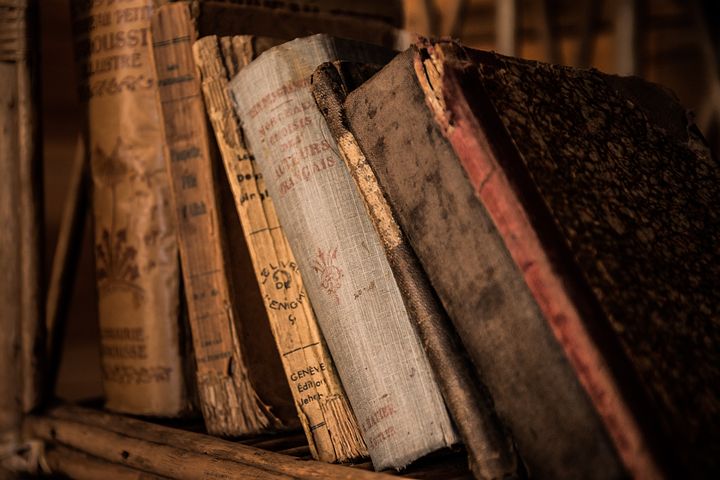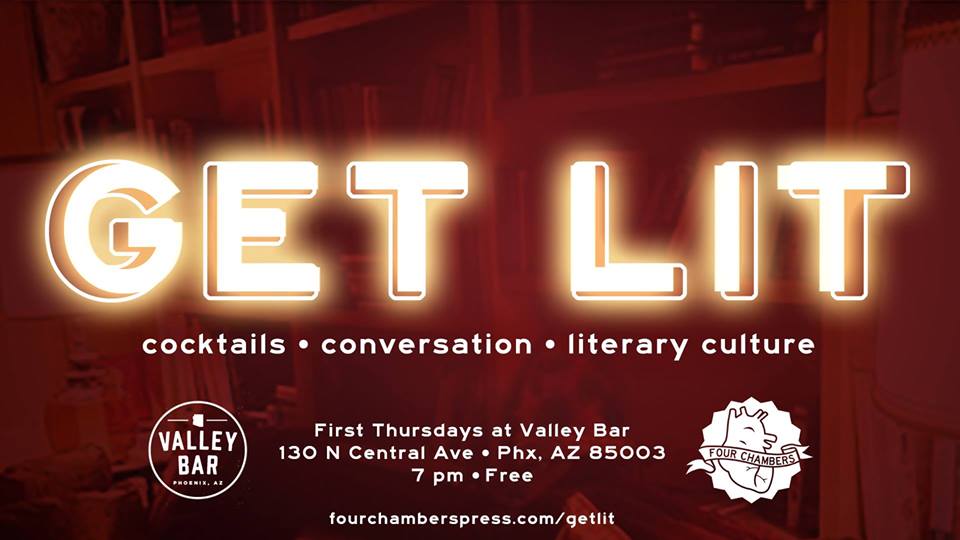Currently, small presses and major houses alike have reflected upon the past to make certain decisions about the printed book’s future. With renewed interest in cover design, concept, and the “nuts and bolts” of a book’s production process such as intentional choices with ink and paper, many publishers are releasing books that are, in a word, beautiful. With revived interest in embellishment and ornamentation from book publishing’s past (details such as deckle edges, silk ribbons, colored endpapers), the industry will continue to pursue these features of the book in the future to stay competitive against (and distinct from) the growing world of e-books. Print editions will stay relevant to readers as cultural, collectible artifacts, thus persisting in the future of book publishing for as long as we have some form of the codex and some form of a marketplace in which to purchase them. While these editions will play a notable role in the future of publishing, there is a downside: they run the risk of widening the gap of “collectorship,” and that the category of privileged individuals who collect cultural artifacts will not be a signifier of those who most appreciate beautiful books.
Design Origins
Just a few hundred years ago, book buyers would purchase a title unbound, and binding was an additional step. Thankfully this process has long since been reconciled, and since, notable changes have been made in book design. Writing for the New York Literary World, Herman Melville wrote in 1875 that there was a “sad lack of invention in most of our bookbinders,” and complained, “books should be appropriately appareled. Their bindings should indicate and distinguish their various characters.” In his article “Judging Literary Books by Their Covers,” author Jeffrey D. Groves analyzes the trajectory of the book cover through book history—from a point in time where books were rarely even sold with permanent covers to points in time where a publisher sought to brand its identity by cover design choices. “A book bound for the customer might reveal a great deal about a bookbinder, a book buyer, or the prevailing tastes of a given period, but a binding commissioned and perhaps designed by a nineteenth-century publisher lays open an attempt to feel the pulse of hundreds or thousands of buyers at once, both to perceive and to shape their notion of what “literature” meant and looked like.”
With innovation in design and layout in current and future publishing, specific authors, publishers, and even designers receive acknowledgement and even praise. “When people do beautiful books, they’re noticed more,” said Robert S. Miller, the publisher of Workman Publishing. “It’s like sending a thank-you note written on nice paper when we’re in an era of e-mail correspondence.” By looking at the past, we see an evolution in how readers view a book (and it’s cover) and come to judge its contents by these elements of design. Yet cover design is not the only way in which art and design can impact a title. Current publishers are re-incorporating imagery in books that have not had illustrations for generations. This nod to books of the past revives the tradition of narrative imagery within the pages of a book, a motif that went through decades of obscure and infrequent use. This cyclical return of a notable book motif is now here to stay (e.g., Ask the Fellows Who Cut The Hay, a Full Circle release that includes watercolors and woodcuts) and trends in design will continue to veer towards the incorporation of visual elements in the future. A revived emphasis on cover and interior art and illustration is part of what makes a book a desirable collectable item to book enthusiasts today.
Designers Do It Better
The celebrated independent small press McSweeney’s began as a series of quarterly literary journals in 1998, and is one example of current emphasis on design that has been greeted widely with fanatical dedication and praise from industry insiders and readers alike. The San Francisco-based publisher is, to modern publishing, synonymous with experimental design and unique print editions. Indeed, McSweeney’s released a hardcover coffee table book entitled Art of McSweeney’s in 2010: a 264-page art book “all about the design of books-as-objects, objects to hold and to interact with,” whose introduction begins, “This book is dedicated to readers who love physical books as objects…and also to show young publishers-to-be how much fun can be had while making books, and how available the means of production is to them.”
McSweeney’s is certainly not the only small press doing interesting things in terms of design and production: there are hundreds of small presses tackling a niche market and focused on quality and aesthetics. Visual Editions is recognized for publishing Jonathan Safran Foer’s die-cut erasure work Tree of Codes, as well as re-releasing beautifully designed editions of Laurence Sterne’s The Life and Opinions of Tristram Shandy, Gentleman and Mark Saporta’s Composition No. 1.
Persephone Books, a publisher whose focus is reprints of classic works written by women, uses elegant endpapers, and lines their inside covers “with designs matched to each book’s publication date. So Dorothy Whipple’s High Wages comes wrapped in endpapers based on a dress fabric from 1930, while Maria Rundell’s A New System of Domestic Cookery of 1816 is topped and tailed with a pattern drawn from a contemporary piece of block-printed cotton.”
Reviewing the books released by small or independent publishers such as McSweeney’s, Visual Editions, and Persephone Books speaks to a future of print editions that capitalize on aspects of art, design, and materiality as a quality that will come to be expected by book lovers.
Not Just For The Little Guys
Current large publishers are following suit with design and production-heavy print editions. In Kathryn Hughes article for The Guardian, she notes, “publishers have started building their marketing strategies around form rather than content. The Everyman Library for example makes much of its books’ elegant two-color case stamping, silk ribbon markers and “European-style” half-round spines. Faber republished a collection of its classic poetry hardbacks illustrated with exquisite wood and lino cuts by contemporary artists.” Penguin’s series, Penguin Threads does so as well. By dusting off classics from their backlist, the publisher re-issued titles such as Black Beauty, The Secret Garden, and Little Women as paperback editions. The series features a redesigned cover that has been made to look like an embroidery (threads), embossed and textured according to the patterns of the stitching. With a reverse image on the inside front and back cover (showing what you would see if you turned over one of your grandmother’s embroidered wall hangings), the editions also boast French folds and deckle edges. Penguin Threads’ platform is built on the hope that book collectors—who may already own some of these classic titles—will be excited and incited by the attention to design and detail of this series.
Like a Record, Baby
To take an example from recent cultural history—though not from the publishing industry—I want to delve into the parallel of cultural consumption that is often used to contrast the book world: the music industry. Well-designed, collectible, proud-to-sit-on-bookshelf-and-coffee-table-alike relics will both persist and be a fixture in a future publishing model comes in part by observations of music consumption of the past decade. Despite the rise of digital, music-lovers find themselves able to acquire music rapidly, and what is purchased as a “collectible” proves discerning as formats have continued to evolve. Musicians and labels have looked for ways to go to market with a tangible product that will make an impact on their audiences and prove collectable artifacts. In the TIME article by Kristina Dell “Vinyl Gets Its Groove Back,” Dell analyzes the resurgence in records having to do a desire for “vinyl’s different shapes (hearts, triangles) and eye-catching designs (bright colors, sparkles)” as well as desirable photography and album art inset. Most vinyl records come with a coupon for a free audio download, giving the consumer two ways of experiencing the album: digitally (portable, personal) and in analog (often cited as preferred for visceral reasons much like we hear in defense of the scent of a new paperback). Music executives continue to see a slight but steady increase in sales from vinyl year after year, while independent music retailers see an uptick in sales of larger proportion for both vinyl and, incredibly, even cassette tapes. Contrasting what is happening with music as another consumable cultural media, we have evidence that cultural artifacts and collectibles are, and will continue to be, a significant portion of any creative industry.
Versus “E-”
Looking at how the music industry is trying to survive the digital age is a natural transition into thinking about how art books may compare and contrast to the future of publishing that, at least according to many, seems to be ruled by talks of e-books and social reading apps. In “Six Ways to Think about an ‘infinite canvas’,” Peter Meyers talks about the sensation of delight, that “print book lovers wax on about their beloved format’s special talents: the smell, the feel, its nap-friendly weight. But touch screen fans can play that game, too. Recall, for starters, the first time you tapped an iphone or similarly modern touch screen. Admit it: the way it felt to pinch, swipe, flick and spread…those gestures introduce a whole new pleasure palette. Reading and books have heretofore primarily been a visual medium: you look and ponder what’s inside. Now, as we enter the age of touchscreen documents, content becomes a feast for our fingers as much as our eyes. Authors, publishers, and designers are just beginning to appreciate this opportunity, making good examples hard to point to.” While conversations about the future of the book seem to always hinge on technology as being a primary factor, we do best not to assume that new technologies guarantee the replacement of the old.
Considering environmental concerns indicates a tendency for book buyers to be more selective about purchases, giving art books an additional push for existing in the marketplace as a collectible, permanent cultural object, and evidence that e-books may never be able to compete.
By looking at the history of design and how book covers began to influence readerships and indicate content by its design elements, it’s no surprise that we have arrived in a world full of beautiful, unique print-editions of books. Numerous small-press and independent publishers are making waves by creating unique, beautiful, artisan books and able to make a living doing so; even larger publishers such as Penguin that are releasing stylized collectible series of their best love backlist titles. Watching the print marketplace populate with various editions of books sampling from book history techniques—from “fore-edge painting” (see The Cheese Monkeys by renowned book designer Chip Kidd) to hand-drawn typographic covers scattered on any New York Times’ bestseller list.
Where recent history may point us towards what feels like an inevitable trend towards these lovely, well-designed and slightly more expensive art books, looking further back into book history gives us two other noteworthy examples. The first example is the birth of the trade paperback, also referred to by Jason Epstein as the “quality paperback.” Watching this new “third category” of book (something between a drugstore paperback and a hardcover release) emerge and take hold of the publishing industry by offering something collectible, quality, and a notch above paperback books that speak to the desire to own something readers can lend, reread, and display on their shelves with pride. Kathryn Hughes’ insight on the renewed interest in bookmaking in the mid-19th century also gives us an apt perspective about the likelihood of well-designed, artisan books playing a significant role in publishing of the future, as well. Even the music industry’s resurgence in selling vinyl records to music collectors seems to speak to something about our culture, and how our cultural objects may function in the near future, if not already.
We are at a point in time where we have the ability to choose what we wish to invest in, and what we want to be disposable vs. collectible. In this way, vinyl record collections may be growing for a generation who never owned a record player in their youth just as book collectors may not be avid readers, but purveyors of cultural content, art, and design. These books will certainly exist in the future however widen the gap of “collectorship” and the type of people who want cultural artifacts. Art books, or any book wherein the publisher has made a considerable effort to create a collectable and desirable artifact will continue to be a thing of beauty and hold a portion of the book market.
As the publishing industry continues to evolve, those doing something different (whether it be the adoption of an old-fashioned book technique, such as hand-binding and printing on letterpress, or something radically new or revolutionary) will be supported by curious consumers, book lovers, and collectors alike.


